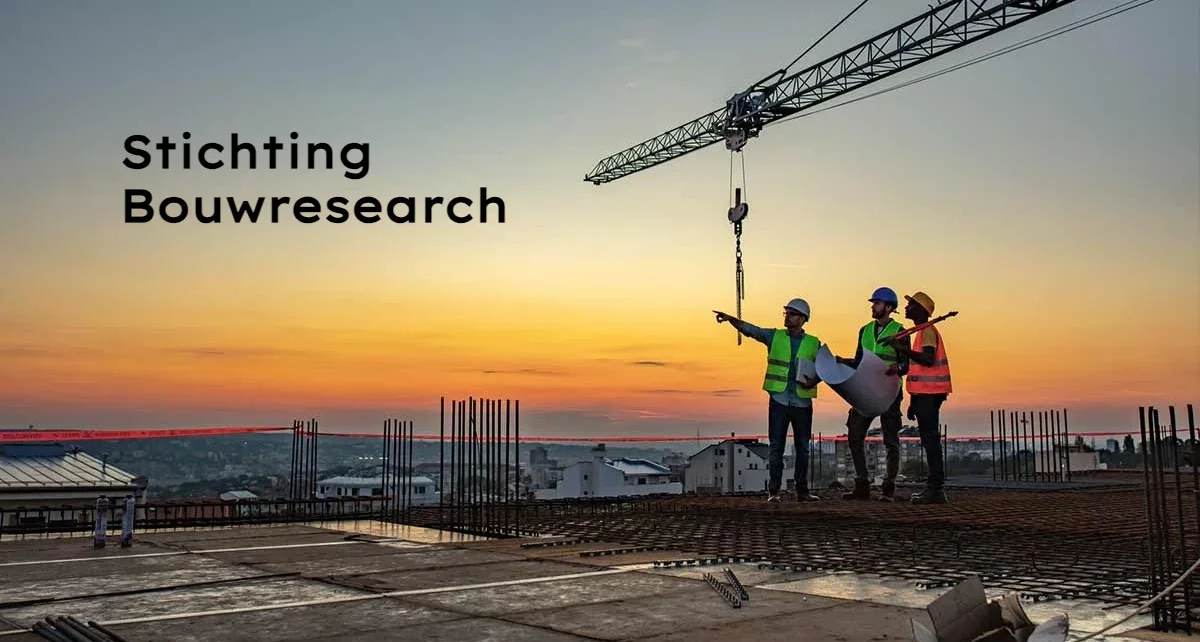The construction industry plays a vital position in shaping our built environment. Stichting Bouwresearch (SBR), a pioneering Dutch studies institute, devoted itself for many years to using advancements in this quarter. hooked up in 1959, SBR always championed innovation and sustainability, leaving a long-lasting impact on how we build these days.
A Mission to Build Better
SBR’s undertaking turned into clean: to propel the construction industry forward by way of improving current practices and developing more efficient answers. This attention on non-stop development manifested in several key regions:
- Improved Materials and Technologies: Stichting Bouwresearch actively promoted research into novel materials and production strategies. This covered exploring prefabrication techniques, superior building substances, and sustainable creation practices. By fostering research and improvement, SBR helped pave the way for an extra modern and efficient construction industry.
- Enhanced Safety Standards: Safety is paramount in creation. SBR performed a critical role in organizing and selling stricter protection regulations. via research and collaboration with enterprise stakeholders, SBR helped create a safer work surroundings for construction employees.
- Reduced Environmental Impact: The development industry has a big environmental footprint. spotting this mission, SBR actively performed research on sustainable construction practices and electricity-efficient construction methods. Stichting Bouwresearch’s efforts contributed to a more environmentally conscious method to production.
Collaboration for Amplified Impact
Stichting Bouwresearch understood the power of collaboration. With the aid of partnering with diverse stakeholders inside the production enterprise, SBR became able to amplify its reach and impact. here are a few key collaborations:
- Industry Partnerships: SBR actively collaborated with construction organizations, fabric providers, and engineering firms. This two-way alternate of knowledge ensured that studies remained applicable to industry desires, whilst studies findings were correctly disseminated for realistic software.
- Government Agencies: Collaboration with government businesses allowed SBR to steer coverage decisions and ensure research aligned with countrywide creation dreams. This collaborative approach facilitated the implementation of research findings on a broader scale.
- Academic Institutions: Partnerships with universities and research institutions fostered a subculture of knowledge sharing and innovation. Stichting Bouwresearch benefited from educational research, while universities received treasured insights into the practical needs of the development enterprise.
These strategic collaborations cemented SBR’s function as an important hub for information change and innovation in the Dutch production quarter.
A Renowned Authority in Construction Research
Stiching Bouwresearch’s dedication to studies set up the employer as a main authority in the field. here’s how SBR accomplished this popularity:
- Focus on Practical Applications: SBR’s research wasn’t in basic terms theoretical. The corporation ensured that research findings translated into sensible programs that might be without problems implemented by using production corporations. This cognizance of real-world solutions solidified SBR’s credibility inside the enterprise.
- Dissemination of Knowledge: SBR actively disseminated its research findings through numerous channels, which include guides, conferences, and workshops. This commitment to knowledge sharing ensured that improvements and nice practices reached an extensive audience in the production enterprise.
- Independent Research: SBR maintained its independence, undertaking studies unfastened from commercial or political bias. This commitment to objectivity ensured the credibility and reliability of its research findings.
Via continuously turning in sensible, and unbiased studies, Stichting Bouwresearch earned the honor and trust of the construction industry, solidifying its position as a leading authority within the discipline.
FAQs about Stichting Bouwresearch
When was Stichting Bouwresearch founded?
Stichting Bouwresearch was founded in 1959.
What was SBR’s mission?
SBR’s challenge changed into enhancing construction practices through research and improvement, focusing on innovation, sustainability, and protection.
What are some of SBR’s key achievements?
- Promoted research into new materials and creation techniques.
- Played a position in setting up stricter safety rules.
- Performed studies on sustainable building practices.
- Have become a main authority in creation research.
How did SBR collaborate with others?
SBR collaborated with industry companions, authorities, businesses, and academic institutions to make certain its research addressed enterprise wishes and had a broader impact.
What became of Stichting Bouwresearch?
Stichting Bouwresearch merged with some other studies institute, CUR, in 2017 to form a brand new entity known as SBRCURnet. SBRCURnet maintains an essential position in construction research in the Netherlands.
Conclusion
Stichting Bouwresearch’s legacy lives on. via its unwavering commitment to innovation and sustainability, SBR drastically fashioned the Dutch production enterprise. Its attention on realistic studies, collaborative method, and dedication to knowledge sharing mounted SBR as a leading authority inside the subject. Even after merging with CUR to form SBRCURnet in 2017, the inspiration laid by using SBR maintains to steer production practices in the Netherlands and beyond. The improvements pioneered through SBR serve as a testament to the energy of studies and collaboration in driving superb trade inside the production industry, paving the way for a more green, sustainable, and safer built environment for generations to come back.




